Matador Network's Blog, page 394
November 1, 2022
LGBTQ Travelers Flock To Key West. Here Are 5 Reasons Why.

An island appendage off land-bound Miami, Key West might be the southernmost point of the continental US, but it’s really a nation apart — a Conch Republic where rainbow flags fly, queer businesses thrive, and no one bats an eye as LGBTQ couples walk hand in hand.
“One Human Family,” Key West’s motto, says it all. Colorful, eccentric, and bohemian — locals don’t just tolerate difference, they celebrate it. Join a ragtag mix of Conchs (the nickname for locals) by staking your claim to a stretch of sugar-sand beach, flying whatever flag suits you best.
Here are five reasons why over 250,000 LGBTQ travelers visit this 8-square-mile paradise in the Florida Keys annually.
1. Queer culture is a part of the island’s cultural fabric.
Photo: Rob O’Neal/Florida Keys News Bureau/HO
In the mid-20th century, Key West’s come-as-you-are attitude became an LGBTQ magnet, attracting a who’s who of queer American artists. Theater legends Jerry Herman, Terrence McNally, and Leonard Bernstein all found inspiration in the salty sea breezes. Lesbian writer Elizabeth Bishop, a US Poet Laureate, penned verses on the island from 1938 to 1946, and gay playwright Tennessee Williams was a local fixture from 1941 until his death in 1983. It’s believed Williams wrote the final draft of A Streetcar Named Desire while staying at La Concha Hotel in 1947.
By the late 1970s, locals capitalized on Key West’s queer cachet by becoming the first American city to recruit pink tourism. Since then, all facets of local life have been decidedly LGBTQ. Locals made headlines in 1983 by electing Richard A. Heyman, one of America’s first openly gay mayors. In 2018, Teri Johnston made waves by becoming the first openly lesbian mayor in a major Florida city. There’s been a gay chief of police and a gay superintendent of schools; even the fire department counts LGBTQ folks among its ranks.
Today, LGBTQ life is cemented on the island with four permanent rainbow crosswalks at the intersection of Duval and Petronia streets. Unlike some spots in Florida, saying “gay” here is more than okay — it’s par for the course.
2. LGBTQ-owned restaurants serve delicious Conch Republic cuisine.
Photo: The Flaming Buoy
Key West’s food scene reflects local life: American classics sizzle with Caribbean style, fresh-caught fish is almost always on the menu, and LGBTQ owners serve some of the tastiest meals in town.
On your drive down to Key West, stop by queer-friendly Bongos Botanical Beer Garden and Cafe on Grassy Key to get into the laissez-faire state of mind. Choose from one of over 20 craft beers on tap, tuck into a Hawaiian-style poke bowl, and relax in a palm-shaded hammock while listening to live music on weekends.
At The Flaming Buoy Filet Co. on Key West, gay owners Fred Isch and Richard Scot Forste season their Cincinnati roots with Conch flavor on a menu with everything from hot dogs smothered in chili and cheese to yellowtail snapper dressed in banana salsa. Star Wars fans: Peep the tchotchkes above the bar and in the bathroom for an intergalactic surprise.
Azur, a gay-owned restaurant with Mediterranean chops, is a sure bet for button-down dining. For brunch, don’t miss the key lime French toast, a tangy-sweet treat with wild berry compote. For dinner, start with salt-cod croquettes bathed in harissa-mint aioli, then tuck into the seafood risotto with mussels, scallops, shrimp, and white fish.
3. There’s always a party on Duval Street.
Photo: Larry Blackburn Photography/The Florida Keys & Keywest
When it’s time to paint the town pink, head to Duval Street’s rum-soaked rainbow crosswalks. Whether you’re looking for an up-all-night dance den or a high-octane drag show, the surrounding strip of juice joints will deliver.
Aqua, part of the multi-bar-and-restaurant Aquaplex, is famous for its nightly drag shows, performed by a trio of wig-tastic Aquanettes. Those interested in encountering drag royalty should head to La Te Da, a hotel with an adjoining restaurant and piano bar. Here, you’ll find local legends like Randy Roberts, a Duval Street sensation thanks to his campy impersonations of Bette Midler and Cher.
801 Bourbon Bar bumps and grinds until 4am, while Bourbon St. Pub — a drink den kitty-corner to 801 — calls to hordes of boys with New Orleans-level frivolity. For something more carnal, hit up Saloon 1, where leather lads show off their gear at parties packed with hedonist chutzpah.
Not all nightlife is about dudes and drag, though. 22&Co, a lesbian-owned cocktail lounge, welcomes all stripes into a flamingo-pink fantasy fit for unicorns and those who love them. Bobby’s Monkey Bar is another quirky LGBTQ-friendly dive with toy monkeys hanging from the ceiling and a serious karaoke scene beloved by fearless belters.
4. Sunny adventures suit all travel styles.
Photo: Captain Tim Curtis/Venus Charters
Beach bums, sea dogs, and history buffs are spoiled for choice on sun-kissed Key West — and all the activities sport LGBTQ-friendly options.
For Speedo-clad sun worshiping, get yourself to Higgs Beach — a 16.5-acre stretch along the Atlantic Ocean. The shallow water and gentle surf are ideal for wading, but remember to shuffle your feet. Friendly stingrays like to glide along the sand, and it’s best not to surprise them.
On the island’s Gulf side, there’s the beach at Fort Zachary Taylor Historic State Park — which LGBTQ Conchs call Fort Liz Taylor Beach, after the silver-screen icon who once frequented the area. The 54-acre park extends from a 19th-century military outpost to a rocky shore, where snorkelers dive down to spot sea life.
For open-water adventures, consider a boat tour with lesbian-owned, all-are-welcome Venus Charters. Captain Karen Luknis lets guests customize their trip with activities like fishing, snorkeling, and dolphin watching. Lazy Dog Adventures, another lesbian-owned outfit, leads kayak, paddleboard, and snorkel tours through mangrove creeks filled with tropical fish and aquatic birds. If you prefer a clothing-optional, all-male encounter, look to Blue Q. Its 42-foot catamaran ferries seafaring men to remote reefs and mangrove islands.
Daytime entertainment can be found indoors, too. Spend an afternoon diving into the life and work of Key West’s most legendary gay literary icon at the Tennessee Williams Museum, or flit among 50 species of winged wonders at the Key West Butterfly & Nature Conservatory. The glass-dome conservatory, run by Sam Trophia and George Fernandez, features hundreds of butterflies, tropical birds, and two very friendly flamingos.
5. LGBTQ resorts offer ultimate relaxation.
Island House. Photo: The Florida Keys & Keywest
Key West rolls out the ROY-G-BIV carpet with adults-only guesthouses — think clothing-optional sundecks, libidinous pool parties, and happy hours galore.
Men-only Island House Resort is decidedly cruise-happy, with birthday-suit pool parties and a 24-hour gym and spa. The daily happy hour — when guests get three drinks gratis — is a prime time to meet fellow Conch vacationers.
For a “straight-friendly” stay where you can let your hair down, choose Alexander’s Guesthouse — a bed-and-breakfast in a refurbished complex from 1902. Cool off in the pool, unwind in the hot tub, or work on your tan from the clothing-optional decks. Sitting on one of the pool-side loungers makes it easy to slip into island time.
Ready to celebrate Key West with the rest of your “One Human Family”? Key West is ready for you. Learn more at Florida Keys & Key West. 
The Best Dehydrated Meals To Bring on Your Next Camping Trip

Food preparation and packing can be one of the most stressful and time consuming parts of getting ready for a backpacking or camping trip. Equally as important as bringing enough food is making sure what you’re bringing tastes good, isn’t bulky or heavy, and packs in enough calories and protein to help you recover after long days of hiking. While there are numerous options, from prepackaged to homemade, dehydrated meals have always been a favorite among backpackers, and for good reason.
Before we get to that, if you’re an experienced home cook or you just prefer to save money, there are plenty of ways to make your own camping appropriate food at home: If you have a food dehydrator at home (or are looking to invest in one) you can put together your own dehydrated meals, using minute-rice or pasta as a base, and whatever you want to dehydrate to add in – from dried fruit to vegetables. If you need even more inspiration for how to eat well in the outdoors, this guide to the best food to cook while camping, according to chefs, is a great place to start.
Another great option is to buy pre-dehydrated ingredients from Harmony House and mix and match all the options to create your own custom meals. While this option is certainly not as convenient as buying them ready-made, it leaves a lot of room for creativity, and you may save money over the long run if you go camping and backpacking often. The bottom line is, there are much better options than trail mix eating well on a backpacking trip.
For campers who prefer convenience and ease of cooking, there are plenty of pre-made dehydrated meals that just need water. This option is tasty, lightweight, and easy to cook. Prepackaged dehydrated meals generally weigh less than 10 ounces and take up very little room in a pack. They’re easy to make after a long day and only require one pot; just boil water, add it to the meal pouch, stir, and wait 10 to 15 minutes for the food to rehydrate. However, campers should always be careful when boiling water. Hot water burns are one of the most common injuries in the back country.
I’ve been backpacking and camping for 20 years, and have worked as a mountain guide in Alaska for the past four. I eat dehydrated meals almost five months out of the year, so it’s safe to say I’ve acquired some favorites over that time, as well as some tips to get the most enjoyment out of your meals. Here are the breakfasts, dinners, and desserts that I keep turning back to season after season – plus my tips for how to eat well with limited resources.
We hope you love the products we recommend! Just so you know, Matador may collect a small commission from the links on this page. Listed prices are accurate as of the time of publication.
BreakfastsPeak Refuel Breakfast Skillet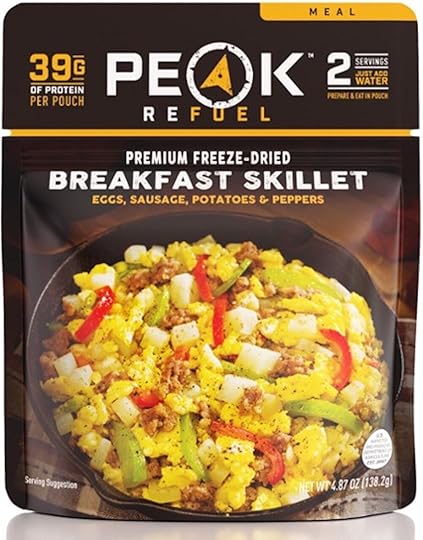
Photo: REI
Coming in at 640 calories, the Peak Refuel Breakfast Skillet is the perfect way to start a long day of hiking. This low-fuss skillet is delicious and nutritious, featuring eggs, sausage, potatoes, and peppers. Peak Refuel meals also claim to have nearly double the protein of many other dehydrated meal companies, making them an excellent choice for recovery and weight-maintenance on long trips.
Good To-Go Granola

Good To-Go is a great option for campers with dietary restrictions. All of the company’s meals are gluten-free and they have vegan and vegetarian options. The granola is packed with oats, figs, blueberries, and almonds in milk and has 580 calories and 17 grams of protein. Try making it with cold water or, on chilly mornings, hot water works too. Granola is my go-to meal for early morning starts since it’s quick to rehydrate.
Mountain House Veggie Chorizo Breakfast Scramble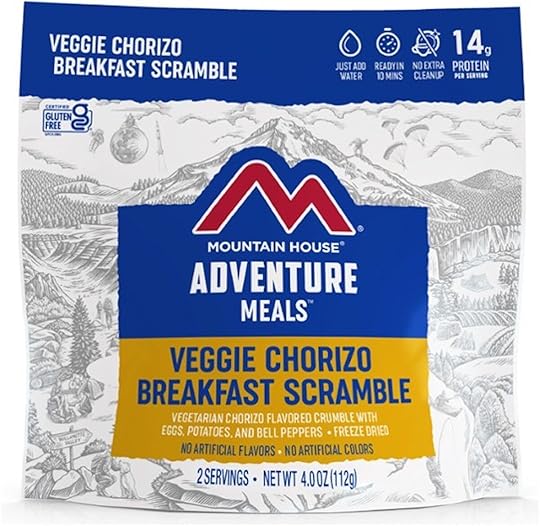
Photo: REI
Mountain House has churned out camping meals for over 50 years, so the company knows a thing or two about tasty food. The company’s breakfast scramble is the perfect mix of spicy vegetarian chorizo, eggs, potatoes, and peppers. Coming in at 580 calories, this breakfast is also gluten-free.
TIP: Most of the dehydrated pouches are deeper than the length of a camp spoon, making it difficult to scrape up every last bite without getting your hand dirty. Bring a long handled spoon or a separate bowl to put your meal in after it rehydrates to keep your hands clean.
DinnersBackpacker’s Pantry Pad Thai with Chicken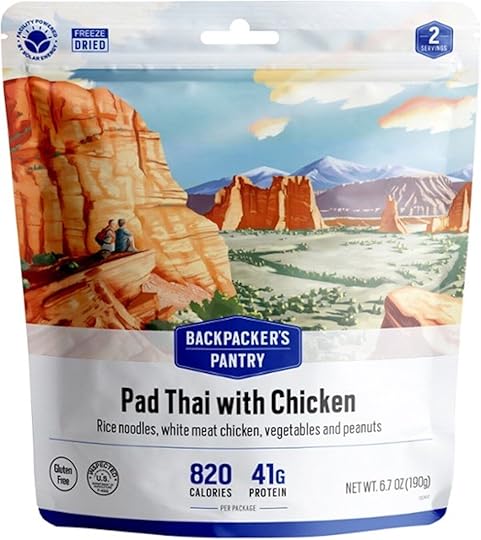
Photo: REI
The Backpacker’s Pantry Pad Thai has been an REI bestseller for years and with good reason. Sweet and savory, this classic is inspired by the traditional Thai meal and with 840 calories will help you recover from a long day of hiking. It’s been one of my favorite dehydrated meals for as long as I’ve been eating them, and it comes in both a vegetarian option and a chicken option.
Heather’s Choice Grass-Fed Beef Shepherd’s Pie
Photo: REI
Heather’s Choice, of Anchorage, Alaska, prides itself on offering nutritious options, and its meals have no gluten, soy, egg, peanuts, artificial flavors, MSG, fillers, or preservatives. The shepherd’s pie meal is a classic meat and potatoes meal and is incredibly hearty, perfect for rainy nights or long days.
TIP: After pouring the water into the meal pouch and stirring it, make sure the pouch is sealed and then stick it under your jacket to act as a hot water bottle, warming you up as your food rehydrates.
Good To-Go Mexican Quinoa Bowl
Photo: REI
Good To-Go’s Mexican Quinoa Bowl is a favorite with my backpacking guests who have dietary restrictions. Gluten-free and vegan, this dinner still packs 26 grams of protein with butternut squash, quinoa, and black beans in a delicious mole poblano sauce.
Mountain House Chicken and Dumplings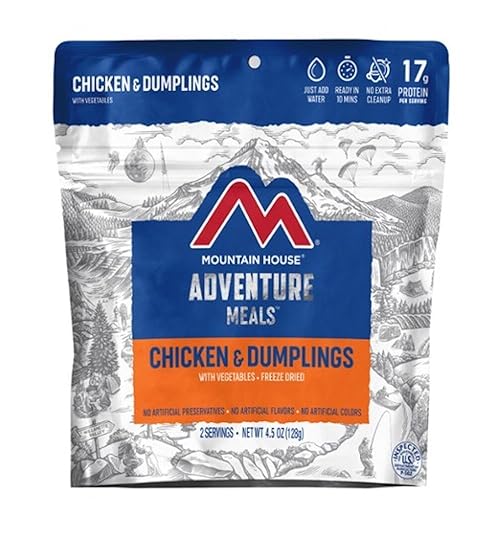
Photo: REI
Chicken, vegetables, and fluffy dumplings in a white gravy sauce? What more could you ask for in a backcountry dinner? Mountain House’s Chicken and Dumplings is another one of my long-time favorites. Flavorful but easy on the stomach, I’ve found this to be the perfect comfort meal for nights at altitude or to make a rough day feel a little bit better.
Nomad Nutrition Caribbean Curry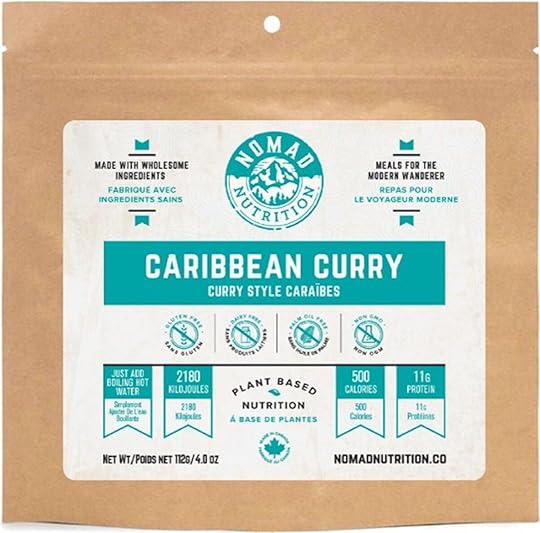
Photo: REI
Nomad Nutrition is a plant-based, gluten-free company that creates beautiful small-batch meals with high-quality ingredients that are organic and non-GMO when possible. With optimized ratios of fats, proteins, and carbs, the Caribbean Curry is a medley of root vegetables, carrots, cayenne pepper, and quinoa that is the perfect combination of sweet and heat!
TIP: Go for tried and true meals that you know you’ll like. There’s nothing worse than a long, cold day of backpacking with beef stroganoff for dinner, only to realize you don’t actually like stroganoff. The same goes double when you’re at altitude. Gastrointestinal issues are common at high altitudes, so choose more bland meals. I made the mistake of bringing dehydrated curry dinners up to Denali one year, couldn’t choke any of them down after my stomach shut down at 17,000 feet, and was left eating Pringles for dinner.
DessertsBackpacker’s Pantry Blueberry Peach Crisp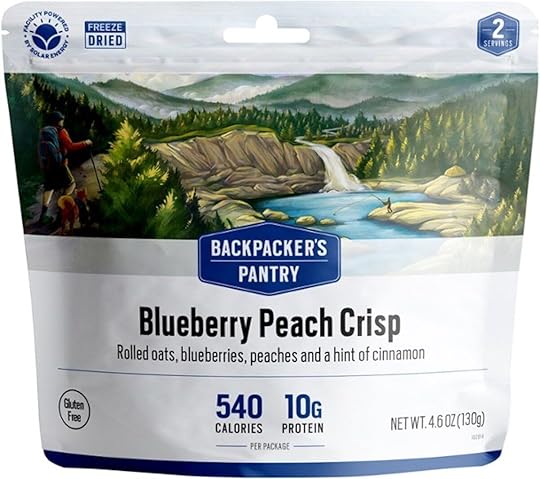
Photo: REI
The Backpacker’s Pantry Blueberry Peach Crisp is packed with fruit, coconut shreds, and rolled oats with a hint of cinnamon. Packing in 540 calories and 10 grams of protein, this crisp is the perfect way to stay warm all night once you’re tucked away in your sleeping bag.
Trailtopia Cheesecake Dessert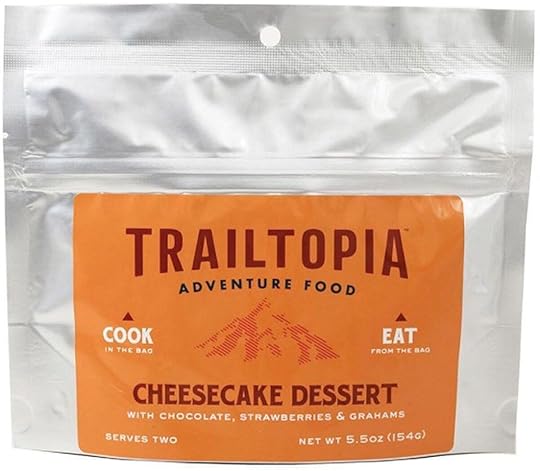
Photo: REI
Perfect to pass around the campfire, Trailtopia’s Cheesecake features real strawberries, chocolate chips, and, a crowd favorite, a sprinkle of crunchy graham crackers on top. Rehydrate this desert with cold water for a traditional cheesecake flavor, or warm for more or a pudding texture.
AlpineAire Chocolate Mudslide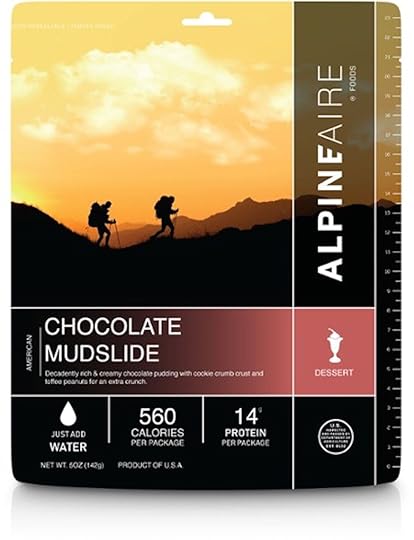
Photo: REI
The AlpineAire Chocolate Mudslide lets campers experience chocolatey goodness even out in the wilderness – plus, it fulfilled all my childhood dreams of licking the batter of a brownie bowl. This dessert is made with cold water and is the perfect combination of rich chocolate, a cookie crumb crust, and toffee peanuts. You won’t want to share this one with your fellow campers.
TIP: If weight isn’t too much of a concern, bring some hot sauce to spice up your meals, or add some Patagonia Provisions Wild Pink Salmon to lunch and dinner to boost the flavor and add even more energy boosting protein. 
October 31, 2022
Best Time To Visit New Orleans for Events, Wildlife Watchers, and Sports Fans
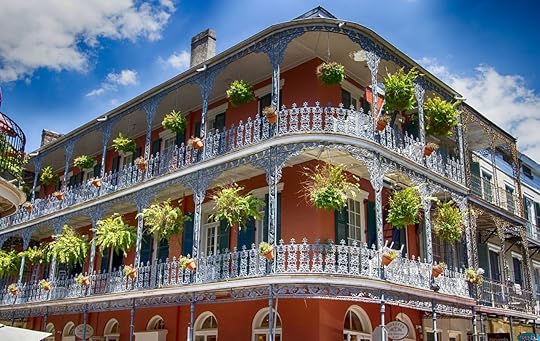
World famous for everything from its food and live music scenes and colorful architecture to airboat tours through swamps and the city’s cocktail culture, there’s no shortage of reasons to plan a trip here. It’s unquestionably one of the most unique and historic cities in the world — but is there a best time to visit New Orleans?
The answer depends entirely on the type of trip visitors are hoping to have. Some people want to spend their time outdoors, while others prioritize tasting and sipping their way through The Big Easy. Some folks may have their hearts set on seeing alligators, while some visitors hope to go to an authentic crawfish boil or attend a lively music festival.
Answering these questions, while also factoring in some seasonal weather considerations, can help determine exactly when to go to New Orleans and what to expect at any time of year.
Seasonal considerations for visiting New Orleans
Photo: Sean Pavone/Shutterstock
It’s no secret that New Orleans experiences some wild weather and is one of the rainiest cities in the US. The coastal area also experiences an annual hurricane season from the beginning of June through the end of November. Even outside of these months, visitors should be prepared for heavy rain and sudden shifts in weather. It’s a good idea to bring an umbrella or light rain jacket everywhere you go, especially if you’re exploring the city on foot.
For about half the year, New Orleans is also hot and quite humid. 80 degrees may sound comfortable, but it’s a different story when the humidity is also in the 80-something percentile. It’s easy to become dehydrated as a result of sweating in this type of climate, so bring plenty of water when you head out, dress in light layers, and be mindful of how much time you spend outdoors on particularly warm or humid days.
Hurricane SeasonOfficially from June through November, the peak of hurricane season in New Orleans is August and September. Even toward the beginning and end of the season, the chance of hurricanes still exists and this time of year is especially rainy regardless.
That’s not to say that visitors should avoid New Orleans during this time — on the contrary, you can find some incredible hotel and airfare deals. However, it’s important to keep plans flexible and keep a close eye on weather reports. Also, while most hurricanes are predicted at least a few days in advance, they do sometimes change course without warning, so it’s a good idea to have a contingency plan in place for getting home in case flights are grounded.
Mardi GrasOne unique thing to keep in mind is that during the week of Mardi Gras, in February or March, many attractions close, and some tours are not offered. Although the weather is usually excellent during this time of year, be sure to research any specific places and tours to find out if they’ll be running normal operations.
Best time to visit New Orleans for festivalgoers
Photo: GTS Productions/Shutterstock
The best time to go to New Orleans for those wanting to experience Mardi Gras or one of the city’s other 130-plus annual festivals is late February through early May. Mardi Gras itself is officially on the Tuesday before Ash Wednesday, which can fall anywhere from the second half of February to the first half of March, and Carnival celebrations start a few weeks before that.
Looking specifically for king cake, the beloved Mardi Gras tradition? It starts making its annual appearance in early January and is available city-wide until shortly after Fat Tuesday.
Other popular festivals that draw plenty of visitors include the French Quarter Festival in mid-April; New Orleans Jazz & Heritage Festival, typically held over the first two weekends in May; and Bayou Boogaloo, also in May.
Note that accommodations for the week of Mardi Gras book out several months ahead of time and prices are significantly higher, plus many hotels in the heart of the city require three- or four-night minimum stays. Needless to say, it’s beneficial to make travel plans as far in advance as possible.
Best time to visit New Orleans for budget travelersFor travelers hoping to save some money and avoid crowds, the best time to visit New Orleans is the summer. It’s hot, extremely humid, and rainy during this time, which keeps the majority of visitors away. If you don’t mind the weather and can be flexible with your plans, though, this is a fantastic time to plan a Big Easy trip, when some of the city’s best accommodations can be found for bargain prices and it’s easy to get reservations at the most popular restaurants and bars.
Another benefit of visiting New Orleans in the summer is being able to visit unique Louisiana beaches. Lake Pontchartrain’s sandy shores are just 30 minutes north, while the gulf beaches of Grand Isle are about two hours away.
Best time to visit New Orleans for crawfish fans
Photo: Ken Weinrich/Shutterstock
Crawfish (also commonly referred to as crayfish and crawdads) is a huge part of Louisiana’s culture, and New Orleans is one of the best places to get a taste of it firsthand — literally. The official crawfish season runs from early March through early June, and the is from March through May.
Of course, restaurants feature crawfish dishes on their menus year-round but hold crawfish boils primarily during this time. There are also several crawfish festivals in New Orleans in April and May, and the only time people can buy their own crawfish in bulk from local restaurants and markets is during the official season.
Best time to visit New Orleans for adventure seekers and wildlife enthusiastsAlligators are abundant in New Orleans, but that doesn’t mean they simply stroll down the street. For the best chances of spotting them (along with otters, deer, mink, and a spectacular variety of birds), book a swamp tour, either in an airboat or in kayaks.
Summer is by far the best time to do this strictly in terms of sightings, as gators love warmth and humidity, not to mention the birds and insects that are equally abundant at this time of year. Of course, the summer months are also the most humid and rainy, so spending time outside can be uncomfortable. If you plan to visit during the summer, try to book swamp tours as early in the day as possible.
Spring is the next-best time to visit New Orleans for touring swamps and watching for alligators. Everything is greening up again after winter, providing beautiful scenery, and the weather is much more pleasant than in the summer.
Fishing in New OrleansOne of the biggest benefits of NOLA’s unique geography is the spectacular year-round fishing. In any season, there’s a vast variety of fish to be caught, often right in the city or very close by.
The best months for catfish, bluegill, and cobia are in the summer, while late fall and winter are best for fishing flounder, yellowfin tuna, and sheepshead.
Best time to visit New Orleans for families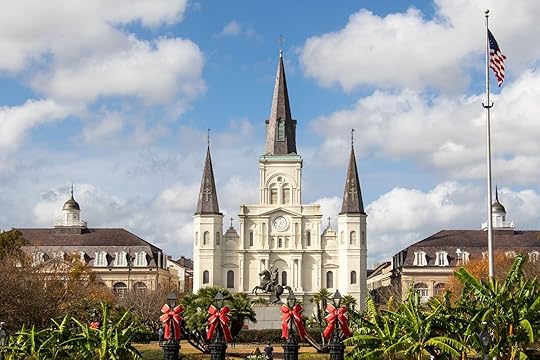
Photo: LauGSmith/Shutterstock
Families will find that there are two different best times to visit New Orleans, depending on what they plan to do and see. While spring is the best season in terms of weather, the occurrence of Mardi Gras and several other major festivals make it tricky to navigate the city with young children, not to mention significantly more expensive.
WinterThe winter months, specifically November through January, are considered one of New Orleans’ two low seasons. This falls between October, a busy time in the city with Halloween celebrations and the popular Voodoo Fest, and the spring high season. The city goes all out with holiday decor and there are plenty of family-oriented winter events to enjoy, plus flights and hotels are reasonably priced.
Winter weather in New Orleans is comfortable and mild, with high temperatures hovering in the mid- to upper 60s. This is also typically the driest part of the year, although keep in mind that rain is a regular occurrence year-round in the city.
SummerAlthough the weather can be uncomfortable, summer is another excellent time to visit New Orleans for families. Crowds are at their lowest, prices are the most affordable of the year, and families have their pick of where to stay. Summer is also the best time to visit nearby beaches, perfect for planning longer getaways.
Best time to visit New Orleans for sports fansNew Orleans has two professional sports teams, the Saints (football) and the Pelicans (basketball). The city is also the longtime host of the annual Sugar Bowl, a major semi-final college football bowl game.
For enthusiastic sports fans who want to catch a game in New Orleans, the best time to visit is October through January. The NFL and NBA seasons overlap during these months, and the respective schedules align a few times each year when both teams play at home in the same weeks. The Sugar Bowl is also held every year on New Year’s Day. 
Elon Musk’s New Internet Service Promises To Speed Up Wifi on Your Next Flight

There are two things you can always rely on when it comes to air travel: underwhelming food that never quite satiates your appetite, and WiFi that moves slower than your old dial-up connection. Paying the airline’s internet fee is a necessity for many business travelers (or for anyone who wants to be somewhat productive during a long-haul flight), but it’s unreliable at best and downright inoperative at worst. The plane food situation isn’t changing anytime soon, but the WiFi might be getting a much-needed boost thanks to Elon Musk and Starlink.
In October, SpaceX announced the launch of Starlink Aviation, a new branch of the satellite internet service that will make the network available on planes.
“With Starlink, passengers will be able to access high-speed, low-latency internet from the moment they walk on their plane,” the Twitter announcement says
The service is slated to offer internet speeds of up to 350 mbps, which is a huge upgrade from the current inflight WiFi options, which usually max out at 100 mbps. This would give passengers the ability to make video calls, play games, send texts, and more.
The groundwork for Starlink Aviation was laid in June 2022, when the FCC gave SpaceX permission to begin selling Starlink terminals that work on moving vehicles. This development was followed by the company’s announcement of Starlink Maritime for boats, and now, of course, for planes.
The wifi upgrade won’t happen overnight, however. Planes will have to be modified to accommodate the Starlink Aviation hardware, which requires a special certificate from the FAA. SpaceX is planning to start delivering Starlink Aviation hardware to airlines in mid-2023, so there’s likely still over a year until passengers can take advantage of the service.
This App Lets You See What Movies Are Currently Being Filmed Around You
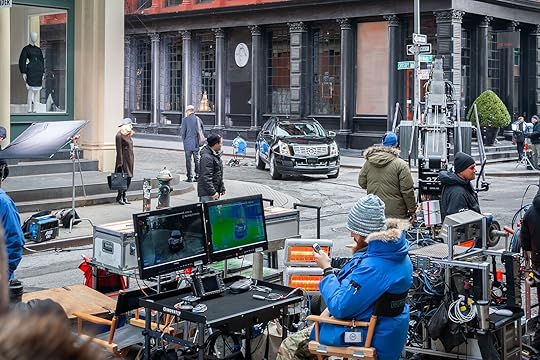
Many people have dreams of being movie stars. Sadly, a more reasonable goal is being an accidental extra in a film coincidentally being shot in your hometown. If you’re lucky enough to live in a scenic part of the country, or near a Hollywood-worthy landmark, maybe you’ve stumbled onto a movie set before. If not, that’s okay. A new app called What’s Filming Now is helping cinephiles (or aspiring extras) learn where movies and TV shows are being filmed across the nation.
Created by New York-based TV and movie tour company On Location Tours, the app allows anyone to upload photos and videos of what’s being filmed around their towns or cities. You can also search for what’s being filmed elsewhere, what stars might be on set, and get updates on filming locations of particular interest to you. Crowdsourcing is the driving force behind the app, as it relies largely on users to post when they see a TV or film production in their area.
The most-filmed cities in the US are Los Angeles, New York City, Chicago, San Francisco, and Las Vegas. If you don’t live in one of those cities, however, don’t worry. My small New England town is the setting for at least two films per year. Sure, they may be Hallmark Christmas movies or straight-to-DVD flops, but still, movie magic is movie magic.
To use the app, all you need to do is download it and register a profile. “What’s Filming Now” is free on both iPhone and Android.
The Best Places To Eat and Drink in Albuquerque Right Now

New Mexican cuisine so often focuses on one question: red or green? It all boils down to your chile preference. Or, if you can’t decide between the two colors of peppers, there’s always the option to combine both and go the “Christmas” route with your order.
That’s just as true in Albuquerque as it is across the rest of the state. But the city has so much more to offer on the food front, too. Albuquerque’s food scene is largely influenced by Indigenous and Spanish cultures. But you can find just about anything you’d like at the cities restaurants and bars, from innovative fusion dishes to cocktails at a convenience store speakeasy.
These are the most exciting restaurants and bars in Albuquerque to eat and drink at right now.
Sawmill MarketView this post on InstagramA post shared by Sawmill Market (@sawmillmarketabq)
Sawmill Market is the state’s first artisanal food hall, and you’ll find a diverse mix of traditional culinary cuisines and emerging trends here. From small-batch pasta to pillowy pastries and poke bowls, there is something to satiate every palate. Aside from local food vendors, you’ll also be able to peruse the shops of artisanal retailers.
There’s enough here to keep you coming back time and time again, but to start make sure not to miss the fresas me amor waffle from XO Waffle, the creamy lemon pasta from Tulipani Pasta, the caramel cappuccino from Plata Coffee, and the ube soft serve from Neko Neko.
Where: 1909 Bellamah Ave. NW Albuquerque, NM 87104
Level 5View this post on InstagramA post shared by Hotel Chaco (@hotelchaco)
Situated on the rooftop of Hotel Chaco, Level 5 takes dining to another level with it’s chic, contemporary atmosphere, delicious craft cocktails, and award-worthy fare like avocado hummus, short ribs, and the earl grey crème brûlée. Indulge in an elevated dining experience at sunset with panoramic views of the Sandia Mountains illuminates in an ethereal pink glow. Only hotel guests can make a reservation, so arrive early to get a spot if you’re staying elsewhere.
Where: 2000 Bellamah Ave. NW, Albuquerque, New Mexico 87104
Los PoblanosView this post on InstagramA post shared by Los Poblanos (@lospoblanos)
With lavender farms, rustic charm, and a resident peacock, Los Poblanos Historic Inn and Organic Farm is where you’ll find the best brunch in Albuquerque. You don’t want to miss the local pecan-beet hummus, chilaquiles (Christmas style), and lavender latte. Located on 25 acres of aromatic lavender fields, you can soak up the sun and views of the Sandia Mountains while sipping lavender-infused coffees and cocktails, enjoy dishes made with fresh ingredients from local farmers and producers, and pick up a few souvenirs to take home with you from the Farm Shop.
Where: 4803 Rio Grande Blvd. N.W., Los Ranchos de Albuquerque, NM 87107
MOMO LoungeView this post on InstagramA post shared by Monterey Motel (@montereymotel_abq)
Located in the heart of Albuquerque’s Old Town, the newly renovated and redesigned MoMo Lounge is the perfect chill spot for refreshing drinks made with local spirits. The MoMo Lounge transports travelers and locals alike to the bygone days of the iconic Route 66 era with a 70s-inspired design mixed with modern touches. While the lounge doesn’t have an on-site kitchen, guests can order from a menu from local restaurants and have the meal delivered to your table. You don’t have to be a guest of the Monterrey Hotel, where the MoMo lounge is located, to be able to pop into the lounge. It’s also a stop on the ABQ Bike & Taco Tour with Routes Bicycle Tours & Rentals.
Where: 2402 Central Ave SW, Monterey Motel, Albuquerque, NM 87104
Electric PlayhouseView this post on InstagramA post shared by Electric Playhouse (@playelectric)
People often say it’s not polite to play with your food, but Electric Playhouse says otherwise. Step inside this interactive gaming wonderland, where guests get to play with their food in more ways than one. Gather up a group of friends for a private dinner where you will be transported through a show with moving abstract art and projections. After dinner, you can indulge in interactive game boards along with classics like air hockey and whack-a-mole. The games and show theme is constantly changing, so this makes for a fun space worth visiting again and again.
Where: 5201 Ouray Rd NW, Albuquerque, NM 87120
Ten 3View this post on InstagramA post shared by TEN 3 (@ten3tram)
Refuel and unwind after a heart-pumping mountain hike at Ten 3, which is located at a peak of the Sandia Mountains. If you’d rather hitch a ride than a hike, hop aboard the Sandia Peak Tram, the longest aerial tramway in North America, for some jaw-dropping views. At the summit, you’ll find Ten 3, which gets its name from the elevation — 10,300 feet. Situated as close to the cliff as possible for optimal viewing pleasure, you’ll find casual dining as well as fine dining options at Ten 3. Try the chip trio and smash burger with fries, and compliment the meal with a Sandia Pink cocktail.
Where: 30 Tramway Rd., Albuquerque, NM 87122
MÁS Tapas y VinoView this post on InstagramA post shared by Hotel Andaluz Albuquerque (@hotelandaluzalbuquerque)
The style and flavor of Andalucía are delivered to you at MÁS Tapas y Vino, located inside the Andaluz Hotel. Fun fact: The Andaluz Hotel is the fourth hotel ever built by Conrad Hilton. MÁS is a full-service restaurant with a hearty wine list serving shareable plates made with locally-sourced foods. Honey-bacon-wrapped dates, crispy Brussels sprouts, patatas bravas, blistered shishito peppers, gambas al ajillo con chorizo, New Mexico apices duck fat fried oysters, carne adobada egg rolls, and the lavender lemon drop are all menu highlights. Don’t leave before taking a moment to peruse the ornate lobby filled with private nooks called casbahs that are perfect for retreating and relaxing with a glass of tempranillo. Each casbah has its own personality For a nightcap, head upstairs to a more modern vibe at Ibiza Rooftop Lounge.
Where: 125 2nd St NW, Albuquerque, NM 87102
Apothecary Rooftop LoungeView this post on InstagramA post shared by Hotel Parq Central (@hotelparqcentral)
Need a dose of feel-good vibes? Apothecary Rooftop Lounge is Albuquerque’s hottest rooftop bar. It’s perched atop the rooftop of the historic Parque Hotel, a former sanitorium, and serves up Prohibition-era classic cocktails such as the pink lady and sazerac along with a side of breathtaking views of the Sandias and Albuquerque skyline. Don’t miss out on the signature cocktails made with house-made bitters and syrups. Inside, you’ll find relics of the building’s clinical past, such as vintage apothecary bottles behind the bar, an old gurney repurposed as a table, and a hanging surgical lamp over said table.
Where: 806 Central Ave SE, Albuquerque, NM 87102
Founders SpeakeasyView this post on InstagramA post shared by Founders (@foundersabq)
A not-so-secret password, followed by a jaunt through an inconspicuous liquor store freezer and down a secret staircase that leads to a clandestine cocktail bar. Hidden as it is, Founders Speakeasy is not exactly secretive, given it openly posts the password on its Instagram page. The bigger challenge to getting in is nabbing one of the few seats, as this tiny bar seats on a first-come, first-served basis. If you’re lucky enough to get inside, you’ll be met with a bevy of spirits and signature beverages to choose from. The dark walls, dim lighting, and decked-out vintage decor all make for a sultry atmosphere where it’s easy to lose track of time while sipping drinks like a banana bread old fashioned.
Where: 622 Central Ave NW, Albuquerque, NM 87102
Indian Pueblo KitchenView this post on InstagramA post shared by Indian Pueblo Cultural Center (@indianpueblo)
One would be remiss to visit Albuquerque and not visit the Indian Pueblo Cultural Center to learn about the culture, history, and heritage of Indigenous people in New Mexico. This cultural institution is known as the gateway to New Mexico’s 19 Native American Pueblos. Before embarking on the cultural tour, kickstart your morning with breakfast at Indian Pueblo Kitchen to experience Indigenous cuisine.
Where: 2401 12th St NW, Albuquerque, NM 87104
Old Town Farm & Bike In CoffeeView this post on InstagramA post shared by Bike Tours, New Mexico Travel (@routesbicycletours)
Book a gourmet bike and taco tour and embark on a scenic journey that takes you along the Rio Grande bosque (forest), through historical Old Town, down Route 66, and out to places like the wildly picturesque Old Town Farm & Bike In Coffee who has some of the best carnitas tacos in town.
Where: 949 Montoya St NW, Albuquerque, NM 87104
El PintoView this post on InstagramA post shared by El Pinto (@thesalsatwins)
El Pinto is an Albuquerque favorite with a beautiful, and impressively massive, property that can seat more than 1,200 guests at a time. Menu highlights include green chile strips, red chile ribs, stuffed sopapillas, and the calabacitas burrito. El Pinto prioritizes sustainability with its use of only locally-sourced ingredients, many of which are grown by the restaurant itself. A composting area that processes 600 pounds of food waste per week provides compost for the restaurant’s gardens. There is also a behemoth menu of distinctive New Mexico cuisine, and even more options when it comes to the selection of tequilas and mezcals with more than 200 options.
Where: 10500 4th St NW, Albuquerque, NM 87114

October 28, 2022
An Airline Is Giving Away Thousands of Dollars in Prizes To People Who Sit in the Middle Seat

Flying in economy is almost always uncomfortable. You have to go through the motions of waiting in that awful line, taking a gamble on whether there will be enough room to store your bag in the overhead bin, and of course, if you don’t book for a row of three, you have no idea who your neighbor is going to be. But there’s one horror most people avoid at all costs — the dreaded middle seat. Sure, there might be a few people out there who prefer the middle over the window for safety reasons, but most people don’t want to be squished together like that for anywhere from a two-to-16-hour flight. Virgin Australia intends to make the horror of the middle seat something to celebrate. That’s why it has launched its Middle Seat Lottery, with over $230,000 worth of prizes, making the unlucky seat you might find yourself in at the last minute, pretty lucky.
Prizes middle-seaters can win include Platinum Velocity Frequent Flyer Status for Virgin Australia plus one million Points; a cruise trip to the Caribbean on Virgin Voyages that includes return Premium Economy flights to the US with United Airlines; tickets to an away game for your favorite Australian Football League (AFL) team with flights included; flights and entry to the AFL “Before the Bounce” pre-game lunch in Melbourne; AFL Grand Final seats (the equivalent of the American Superbowl) with a pre-game boundary line experience, merchandise, and entry to the AFL Grand Final after party, a helicopter pub crawl extravaganza, that includes return flights to Darwin, and a Cairns adventure package (home of the Great Barrier Reef) that provides for accommodation, return flights, and excursions.
View this post on InstagramA post shared by Virgin Australia (@virginaustralia)
To be eligible to win, guests must join Virgin’s Velocity’s frequent flyer program and fly in a middle seat before April 23, 2023. One winner will be randomly selected each week to win, making the middle seat the luckiest place to be, if you win. 
How To Take Amazing Travel Photos With Just a Phone, According To Photographer Henry Wu

Smartphones revolutionized photography, though the jury’s still out on whether it’s for better or worse. They allowed social media users to launch full-fledged travel and landscape photography careers on the backs of miniature phone camera lenses, making it easier than ever to capture professional-looking photos without any professional experience.
But what about the pro travel and landscape photographers who’ve spent a lifetime honing their craft and mastering how to use expensive DSLRs? Well, it turns out there’s enough love to go around. Smartphones are making photography easier for the average Joe, but that doesn’t mean they magically turn the average Joe into Chris Burkard. iPhone photography is a craft in itself, and there are several tips and tricks to mastering it, whether you prefer landscape photography, urban streetscapes,
Matador spoke to Henry Wu, a travel and lifestyle photographer, to learn how, exactly, to take the best pictures using only what you already have in your pocket. Wu travels the world with his camera, sharing his experiences through beautiful and stylish photography. He’s also the editor of This Life of Travel, a digital travel publication aimed at bringing storytellers, photographers, and digital nomads together to celebrate and inspire travel. Here, he explains the ins and outs of getting that perfect travel shot without lugging around an expensive camera.
Matador: Is there a need to buy an expensive camera for a vacation if you’re not a professional photographer?View this post on Instagram
A post shared by Henry Wu • San Francisco Travel + Lifestyle (@humminglion)
It really depends on what kind of shots you’re going for while on vacation. If you’re the kind of traveler who is obsessed with high-quality shots for prints and don’t mind carrying a lot of heavy gear around, then the SLR/mirrorless camera route might be for you. On the flip side, if you want to travel light and are interested in just getting some nice shots and videos from your vacation, then a smartphone would be a great option.
I have a good mix of photos from my phone and mirrorless camera up on my website. Can you tell which shots are from the phone and which are from the mirrorless?
What’s the biggest difference between phone cameras and “real” cameras?
A cell phone is far easier to carry for the average traveler, as compared to a bulky DSLR camera with multiple lenses. Photo: Bignai/Shutterstock
Traditional digital cameras have large sensors that capture much more data – so when it comes time to edit the photos, you can really pull out colors and details that aren’t possible with a phone camera shot. With that being said, it’s hard to beat the portability and convenience of a smartphone that fits in your pocket versus a three-pound, bulky, and large camera setup.
Can iPhone photographers compete with traditional photographers, or is the technological capability still not quite there?View this post on Instagram
A post shared by Henry Wu • San Francisco Travel + Lifestyle (@humminglion)
The line is definitely starting to blur, especially among your average traveler who isn’t taking professional-level photos. The new iPhone 14 Pro camera also yields fantastic 48 megapixel shots in RAW mode.
What are the most common mistakes people make when taking travel photos with their phones?
Shooting into the sun results in a loss of contrast and your subject being heavily shadowed. Photo: Suzie Dundas
A common mistake is taking backlit travel photos, which is when you have the sun or a bright light behind the subject. It ends up with either a washed-out photo or a very dark subject. Try to have the sun behind the camera or at an angle so the subject is lit properly.
What’s one easy technique people can use to improve their photo quality?View this post on Instagram
A post shared by Henry Wu • San Francisco Travel + Lifestyle (@humminglion)
One easy way to level-up your photos is by using the grid display on your smartphone and following the rule of thirds where the subject is touching one of the grid lines. Another creative way to take travel photos is to frame your subject by moving around until you have a foreground element such as tree leaves or flowers, for example. For more helpful photo tips and tutorials, check out my Instagram.
What’s your favorite phone (or the best phone, in your opinion) for travel or landscape photography, and why?While I’ve tried other phones before (Samsung, Google), I prefer the overall package that an iPhone delivers in terms of photo quality, video stability, and the Apple ecosystem (AirDrop, iOS, Photos, MacOS). 
How To Take Amazing Travel Photos With Just a Phone, According To Insta-Pro Henry Wu

Smartphones revolutionized photography, though the jury’s still out on whether it’s for better or worse. They allowed social media users to launch full-fledged travel and landscape photography careers on the backs of miniature phone camera lenses, making it easier than ever to capture professional-looking photos without any professional experience.
But what about the pro travel and landscape photographers who’ve spent a lifetime honing their craft and mastering how to use expensive DSLRs? Well, it turns out there’s enough love to go around. Smartphones are making photography easier for the average Joe, but that doesn’t mean they magically turn the average Joe into Chris Burkard. iPhone photography is a craft in itself, and there are several tips and tricks to mastering it, whether you prefer landscape photography, urban streetscapes,
Matador spoke to Henry Wu, a travel and lifestyle photographer, to learn how, exactly, to take the best pictures using only what you already have in your pocket. Wu travels the world with his camera, sharing his experiences through beautiful and stylish photography. He’s also the editor of This Life of Travel, a digital travel publication aimed at bringing storytellers, photographers, and digital nomads together to celebrate and inspire travel. Here, he explains the ins and outs of getting that perfect travel shot without lugging around an expensive camera.
Matador: Is there a need to buy an expensive camera for a vacation if you’re not a professional photographer?View this post on Instagram
A post shared by Henry Wu • San Francisco Travel + Lifestyle (@humminglion)
It really depends on what kind of shots you’re going for while on vacation. If you’re the kind of traveler who is obsessed with high-quality shots for prints and don’t mind carrying a lot of heavy gear around, then the SLR/mirrorless camera route might be for you. On the flip side, if you want to travel light and are interested in just getting some nice shots and videos from your vacation, then a smartphone would be a great option.
I have a good mix of photos from my phone and mirrorless camera up on my website. Can you tell which shots are from the phone and which are from the mirrorless?
What’s the biggest difference between phone cameras and “real” cameras?
A cell phone is far easier to carry for the average traveler, as compared to a bulky DSLR camera with multiple lenses. Photo: Bignai/Shutterstock
Traditional digital cameras have large sensors that capture much more data – so when it comes time to edit the photos, you can really pull out colors and details that aren’t possible with a phone camera shot. With that being said, it’s hard to beat the portability and convenience of a smartphone that fits in your pocket versus a three-pound, bulky, and large camera setup.
Can iPhone photographers compete with traditional photographers, or is the technological capability still not quite there?View this post on Instagram
A post shared by Henry Wu • San Francisco Travel + Lifestyle (@humminglion)
The line is definitely starting to blur, especially among your average traveler who isn’t taking professional-level photos. The new iPhone 14 Pro camera also yields fantastic 48 megapixel shots in RAW mode.
What are the most common mistakes people make when taking travel photos with their phones?
Shooting into the sun results in a loss of contrast and your subject being heavily shadowed. Photo: Suzie Dundas
A common mistake is taking backlit travel photos, which is when you have the sun or a bright light behind the subject. It ends up with either a washed-out photo or a very dark subject. Try to have the sun behind the camera or at an angle so the subject is lit properly.
What’s one easy technique people can use to improve their photo quality?View this post on Instagram
A post shared by Henry Wu • San Francisco Travel + Lifestyle (@humminglion)
One easy way to level-up your photos is by using the grid display on your smartphone and following the rule of thirds where the subject is touching one of the grid lines. Another creative way to take travel photos is to frame your subject by moving around until you have a foreground element such as tree leaves or flowers, for example. For more helpful photo tips and tutorials, check out my Instagram.
What’s your favorite phone (or the best phone, in your opinion) for travel or landscape photography, and why?While I’ve tried other phones before (Samsung, Google), I prefer the overall package that an iPhone delivers in terms of photo quality, video stability, and the Apple ecosystem (AirDrop, iOS, Photos, MacOS). 
These 9 Neighborhoods Prove You Don’t Need a Car To Enjoy Los Angeles
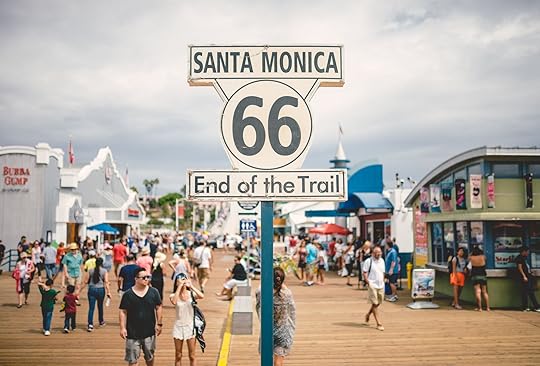
When most people think about planning a trip to Los Angeles, they think they need to shell out extra money toward renting a car to get around, which they’ll then spend most of their free time stuck in, driving the notoriously crowded and busy streets while fighting for paid parking opportunities. But here’s a little-known secret about LA — carry $3.50 for a day pass on the LA Metro and there’s no need to worry about parking or driving.
Even if you don’t hike in Los Angeles, there are plenty of neighborhoods in Los Angeles that are perfectly explorable on foot and offer ample public transportation access. Here are nine neighborhoods across Los Angeles that, once there, offer visitors the opportunity to embark on a leisurely stroll and boast enough enjoyable spots to eat, sleep, and adventure to last an entire trip.
We hope you love walking through Los Angeles. Just so you know, Matador may collect a small commission from the links on this page if you decide to book a stay. Listed prices are accurate as of the time of publication.
Santa Monica
Photo: Daniel Vine Photography/Shutterstock
Santa Monica is one of the most walkable neighborhoods in LA. This seaside city features a nice mix of historic and storied establishments like the iconic but ostensibly haunted hotel, The Georgian, alongside a collection of newer, trendy destinations, all made for exploring on foot. It’s the last stop on the Metro J (Silver) line, which means travelers and locals can take the train into town all the way to and from downtown and step off here, never having to worry about driving or parking.
Close to the Metro stop, the Santa Monica Pier and Pacific Park are classic spots for anyone seeking some vintage fun in the form of amusement park rides and arcade games. Explore the dozens of gorgeous murals, or stroll along the 3rd Street Promenade, which comprises three open-air, car-free blocks anchored by the outdoor shopping destination, Santa Monica Place.
Dine at Vamos. Vamos., a margarita and nacho bar recently opened on Main Street. Stay at the Fairmont Miramar Hotel & Bungalows which is just a short 2-block stroll away from the Santa Monica Farmers Market and adjacent to the iconic bar, The Bungalow, which is one of the most legendary spots to experience LA nightlife on the West Side.
Pasadena
Photo: Iealphotographer/Shutterstock
Visitors can take the Metro L (Gold) Line to Pasadena and explore a range of attractions on foot. Old Pasadena is a particularly walkable district with a storied past. The 22-block district includes a collection of restored buildings spanning from 1875-1949 as cited in the National Register — and today is still a hub of entertainment, shopping, and dining featuring more than 300 businesses. Weave through the pedestrian-friendly streets and step into the historic alleys to enjoy a sense of authenticity and character throughout the neighborhood.
Stop at Russell’s, a classic breakfast and weekend brunch spot. Get some self-care in at Lather’s first boutique — a modern apothecary experience that includes an essential oil blending bar and in-store sampling sink. Be sure to try one of the many boba shops offering a delicious selection of milk teas, and browse the diverse offerings of arts and entertainment, including galleries, live music, and nightlife. It’s an impressive collection of destinations to explore on foot.
Venice Beach
Photo: Worachate Joe Khongthon /Shutterstock
Venice Beach dates all the way back to the early 1900s, originally developed and designed by the eccentric millionaire Abbot Kinney as a Los Angeles beach destination resort, paying homage to its Italian theme with canals and pedestrian footbridges to explore. These canals still exist today, as well as the boardwalk — which is an internationally renowned attraction, offering those who are feeling beachy and bohemian dozens of craft booths to explore and nearly endless entertainment from enthusiastic street performers.
Right on the boardwalk adjacent to the iconic “Venice” sign and the Samesun Venice hostel is Winston House, a restaurant, bar, and live music venue that is a local standby for dining and dancing. Nearby, The Waterfront is a fantastic place to lounge for a boozy brunch and cuisine that’s made from ingredients sourced from local farms. Lastly, Abbot Kinney Boulevard is a mile-long strip with some of the trendiest fashion outlets, beautiful street art, and impressive food venues, just a few minutes’ walk from the beach.
Culver City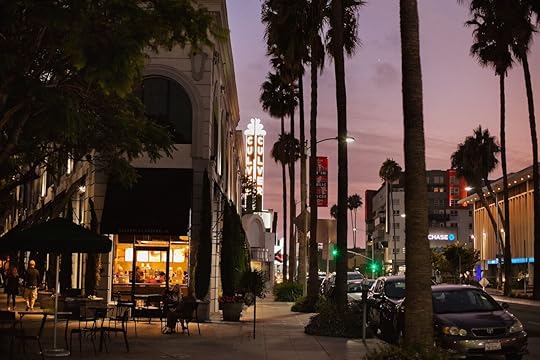
Photo: Ganna Tokolova/Shutterstock
The highly walkable enclave of Culver City has quickly become a creative capitals with recent arrivals of media studios like Apple TV, Amazon Studios, and HBO. Visitors can take the Metro E Line (Expo) to Ivy Station and explore this newly developed mixed-use outdoor space which has welcomed a number of local businesses like LA Ale Works. Ivy Station is also home to the area’s newest hotel, The Shay, which opened this past year and is a perfect spot for relaxing between adventures or refueling at the on-site wood-fired comfort food restaurant, Etta.
Across the street from this complex is another relaxed shopping complex, Platform LA, which was built to showcase the talent of independent brands like Margot — which concocts delicious rooftop cocktails. Next, explore the Culver City Arts District, which runs along the main street of Washington Boulevard and features dozens of coffee shops, ice cream shops, and local outposts like Hi-Lo market. In the main downtown area at the convergence of Washington and Culver Boulevards, check out Citizen Public Market, a trendy new concept occupying a 1929 building with a diverse selection of eateries.
Hollywood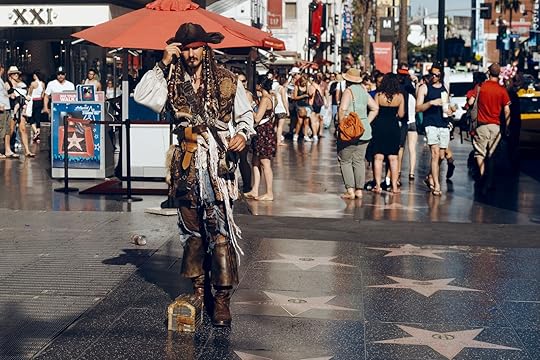
Photo: Nevskii Dmitrii/Shutterstock
Hollywood has long been known as the entertainment capital of the world, serving as home to well-known landmarks including like the Walk of Fame and The Dolby Theatre — and you can still feel the “Old, Golden Age of Hollywood” in an area known as the Vinyl District. The name acts as a tribute to the district’s long history in the music industry with a dozen recording studios, record shops, entertainment labels and more making this district their home. Recently, The Vinyl District has experienced major development, adding new dining concepts and luxurious, boutique hotels.
Stay at the Thompson Hollywood or its adjacent sister property the tommie Hollywood — both of which feature rooftop bars and host weekend events like free rooftop yoga classes. Grab a drink at Grandmaster Recorders which is a modern rooftop lounge with beautiful sights of the Hollywood skyline — though it’s most famous for having hosted legends like David Bowie, Stevie Wonder, the Red Hot Chili Peppers, and more in its building recording studio. Beauty & Essex occupies 10,000 square feet of the Dream Hollywood, including a beautiful ground-floor courtyard and second-level patio for outdoor dining with opulent decor choices like purple suede bar chairs and elegant pearl chandeliers.
West Hollywood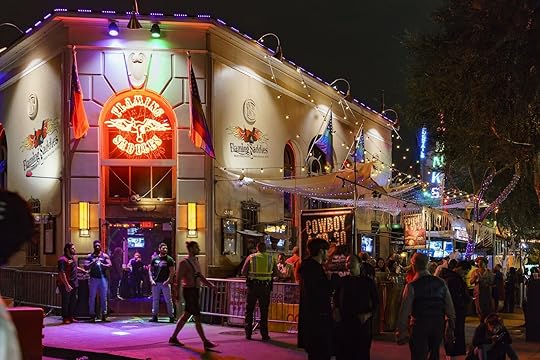
Photo: Kit Leong/Shutterstock
Vibrant and fabulous West Hollywood technically encompasses less than two square miles of geography between nearby upscale neighborhoods Beverly Hills and the Hollywood Hills — but its wide sidewalks and hundreds of businesses accessible on foot make it one of the most walkable places to be in Los Angeles (plus, there’s even a city-supported free shuttle service). There are three distinct neighborhoods that make up WeHo — The Sunset Strip, The Design District, and Santa Monica Boulevard — each of which features its own personality.
The Sunset Strip has stood as a legend in pop culture for decades as being a rowdy playground for Hollywood’s elite and has seen significant revitalization these past few years, including the introduction of new luxury hotels including The Pendry and its rooftop restaurant, Merois. On Santa Monica Boulevard, which is affectionately referred to as “the rainbow district,” step into the newest installation of Bottega Louie, which has won restaurant design awards for its beautiful interior and exterior style, and impeccable pastries. In the Design District, which covers the Southwestern portion of the area skirting Melrose Avenue, Craig’s is a known celeb hangout hotspot. If you choose the stay in West Hollywood, consider La Peer Hotel, with its restaurant hotspot Issima.
Beverly Hills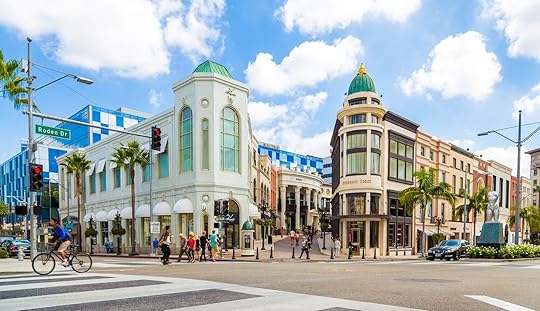
Photo: John Doe/Shutterstock
Beverly Hills is a site of the future purple (D) line Metro extension, which will make this neighborhood significantly more accessible to people via public transportation from downtown LA and into the West Side. Stroll around the scenic Beverly Gardens Park, which features a collection of notable art sculptures, various specialty gardens, and fountains to admire. Visit The Beverly Hilton, known for its old-Hollywood history and current status for hosting big-name events like Golden Globes Awards ceremonies, Grammy celebrations, and more.
Stroll down the glamorous Rodeo Drive with its big, clean sidewalks along the three palm-dotted blocks containing 100 of the world’s most luxurious brands. This internationally renowned street is anchored by The Beverly Wilshire (yes, where Julia Roberts basked in some epic pampering a la “Pretty Woman”) where grabbing a drink outdoors at THEBlvd includes unmatched people-watching opportunities.
Mid City: Fairfax/Beverly Grove/West 3rd Street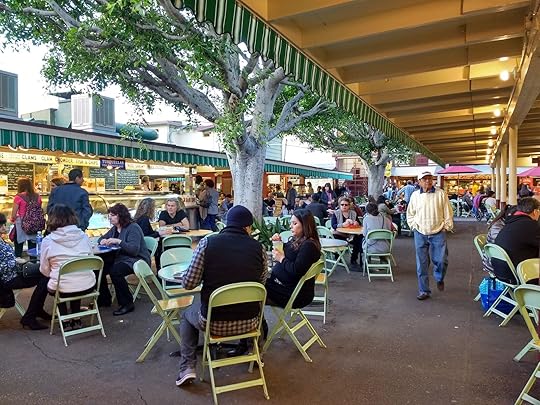
Photo: Alex Millauer/Shutterstock
The mid-city neighborhood consists of the walkable Fairfax, Beverly Grove, and West 3rd Street districts. The future purple (D) line Metro extension is scheduled to be completed in the next few years, adding to future accessibility. Once in the area, stop at the Original Farmers Market which has stood for nearly 100 years serving fresh produce and local cuisine at dozens of farmstand booths.
Adjacent to this historic market is the outdoor, upscale mall, The Grove, which feels like a trip abroad and offers some of the best shopping opportunities in the neighborhood. Short Stories Hotel on Fairfax across the street is a great spot for drinks and small plates fireside, and an even better place to crash. Spend a night out exploring the West 3rd Street shopping and dining district.
Downtown Los Angeles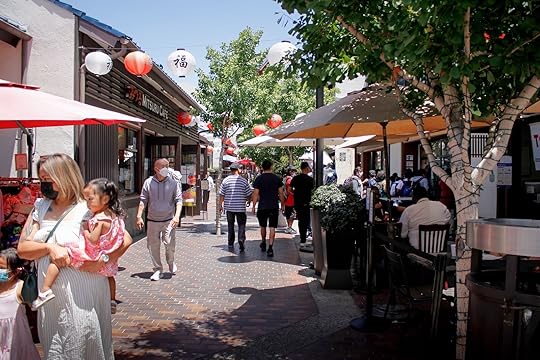
Photo: The Image Party/Shutterstock
Downtown Los Angeles is extremely walkable and is the main hub of public transportation at Los Angeles Union Station. There are a few different districts within “DTLA” — including Bunker Hill, Little Tokyo, the Financial District, the Historic Core, the Arts District, and South Park, among others. In Bunker Hill, stop into The Grand LA — home to the newly unveiled Conrad DTLA, which is a perfect home base for staying and seeing the nearby museums like The Broad or The MOCA and the enormous Music Center.
This complex is one of the nation’s largest performing arts centers and home to four iconic theaters — Dorothy Chandler Pavilion, Ahmanson Theatre, Mark Taper Forum and Walt Disney Concert Hall, as well as local restaurant Abernethy’s, which serves a unique, ever-changing menu showcasing local LA chefs. The Historic Core is home to the iconic Grand Central Market, which has been serving a range of diverse cuisine to LA locals and visitors for more than a century. In the Arts District, explore craft breweries like Angel City Brewery or Arts District Brewing Company. And the South Park neighborhood is also home to LA Live, the complex where the Crypto.com Arena and the GRAMMY Museum live. 
Matador Network's Blog
- Matador Network's profile
- 6 followers



